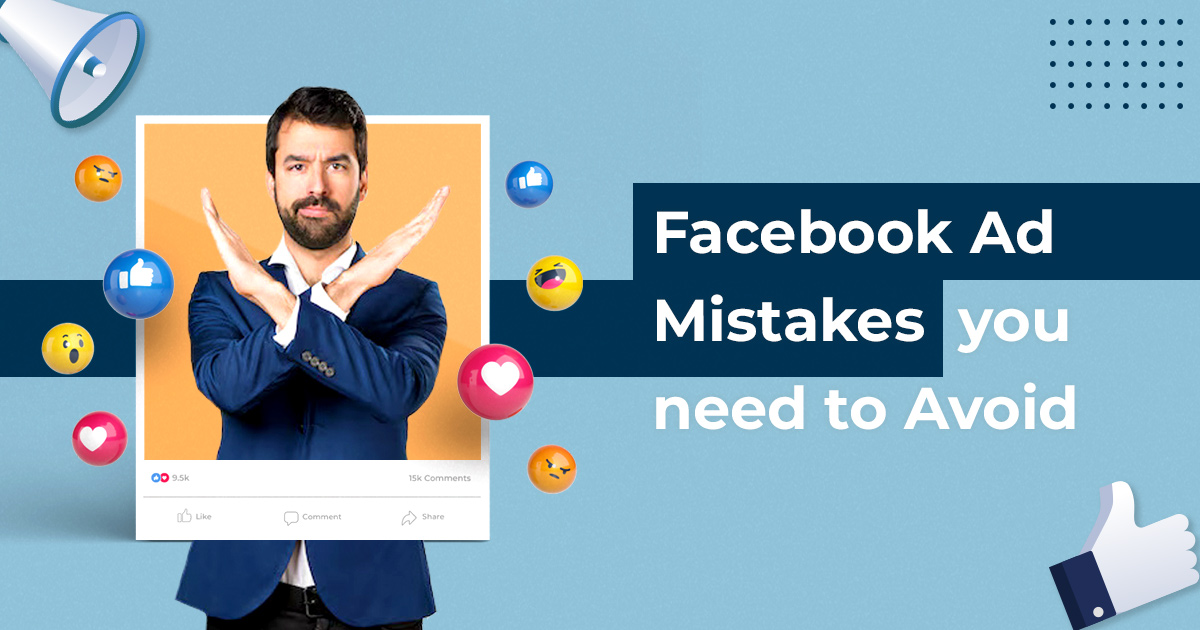Facebook Ads is a game-changing marketing tool for businesses. However, it comes with its own challenges. If you are into setting up ad campaigns, you need to take care to avoid some common mistakes that can ruin your results. Fortunately, most of these mistakes can be easily avoided or corrected with the right strategies.
In this article, we’ll explore the top 5 Facebook ad mistakes to avoid and share actionable tips on how to fix them.
1. Mistake #1: Poor Targeting
What it is: Targeting the wrong audience is one of the most common mistakes Facebook advertisers make. Whether you’re targeting too broadly or too narrowly, improper audience targeting can result in wasted ad spend and poor performance.
Why it’s a problem: If your ads aren’t reaching the right people, you won’t see the desired results, whether it’s clicks, leads, or conversions. It’s essential that your ads reach people who are interested in your product or service.
How to fix it:
- Refine your audience: Use Facebook’s robust targeting options to narrow down your audience based on demographics, interests, behaviors, and location.
- Create Custom Audiences: Leverage data from people who have already interacted with your business—website visitors, email subscribers, or previous customers.
- Use Lookalike Audiences: Create Lookalike Audiences based on your top-performing customers to reach new people who share similar characteristics and behaviors.
2. Mistake #2: Ignoring Mobile Users
What it is: Failing to optimize your Facebook ads for mobile devices is a costly mistake. Since the majority of Facebook users access the platform on their smartphones, it’s essential that your ads are optimized for mobile.
Why it’s a problem: Mobile optimization ensures that your ads are easy to view, interact with, and convert on smaller screens. If your ad content doesn’t display well on mobile devices, it could result in lower engagement and fewer conversions.
How to fix it:
- Optimize for mobile-first: Use vertical and square images or videos for better display on mobile screens.
- Ensure a mobile-friendly landing page: Your landing page should load quickly and be responsive to mobile users.
- Test your ads: Before launching, preview your ads on both desktop and mobile devices to ensure they look great on all screen sizes.
3. Mistake #3: Not A/B Testing Your Ads
What it is: A/B testing, or split testing, is the practice of testing different versions of your ads to see which performs best. Not running A/B tests means you’re missing out on opportunities to optimize your ads for better results.
Why it’s a problem: Without A/B testing, you might continue running ads that aren’t as effective as they could be, leading to lower engagement, higher costs, and missed opportunities.
How to fix it:
- Test one element at a time: When running A/B tests, make sure to test only one element at a time (e.g., image, headline, call-to-action) to understand what exactly is driving performance.
- Run multiple variations: Test different combinations of visuals, ad copy, and targeting to find the winning formula.
- Monitor results regularly: Keep track of your A/B test results and use the insights to refine your future campaigns.
4. Mistake #4: Lack of Clear Call-to-Action (CTA)
What it is: A call-to-action (CTA) is what tells users what to do next, whether it’s “Shop Now,” “Learn More,” or “Sign Up.” If your ad lacks a clear and compelling CTA, users may be unsure of how to engage with your ad or take the next step.
Why it’s a problem: Without a strong CTA, even the most creative and visually appealing ads can fall flat. A clear CTA provides direction and encourages users to take action, which is the ultimate goal of any ad campaign.
How to fix it:
- Make your CTA clear and specific: Use action-oriented language such as “Shop Today” or “Get Your Discount” to prompt immediate action.
- Place the CTA prominently: Your CTA should be easy to find and stand out in your ad. Consider placing it above the fold or at the end of the ad copy.
- Test different CTAs: A/B test different CTA variations to determine which one resonates best with your audience.
5. Mistake #5: Not Monitoring or Adjusting Your Campaigns
What it is: Launching a Facebook ad campaign and then forgetting about it is a common mistake. Facebook Ads require continuous monitoring and optimization to maintain performance over time.
Why it’s a problem: Ads can become less effective over time due to ad fatigue, changing audience behavior, or budget mismanagement. Without regular monitoring, you may end up wasting ad spend or missing out on opportunities to optimize your campaigns.
How to fix it:
- Monitor performance regularly: Keep an eye on key metrics like CTR, CPC, ROAS, and conversion rates to ensure your campaigns are performing well.
- Adjust your ads based on performance: If an ad is underperforming, pause it, or make changes such as tweaking the copy, image, or targeting.
- Scale successful campaigns: If you find an ad that’s performing well, increase its budget or extend its duration to capitalize on its success.
Conclusion
Running successful Facebook Ads requires a combination of creativity, strategy, and data analysis. By avoiding common mistakes like poor targeting, ignoring mobile optimization, and failing to test your ads, you can significantly improve your ad performance and ROI. Regular monitoring and adjustments ensure your campaigns remain effective and continue to meet your business goals.
By focusing on these fixes, you can ensure your Facebook Ads deliver the best possible results and drive your business forward.

